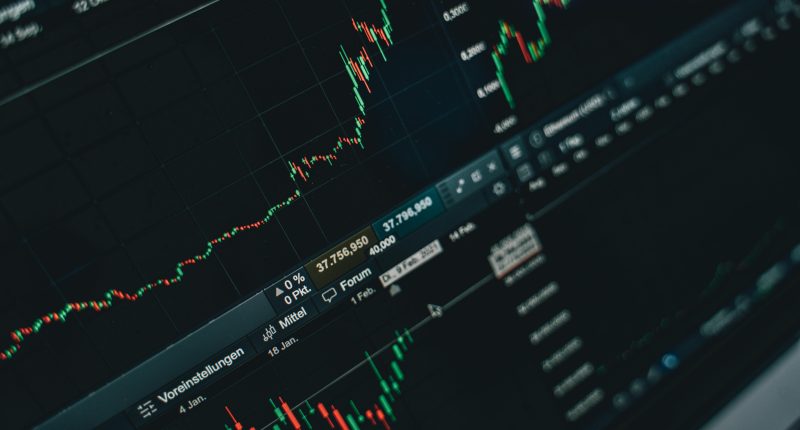The landscape of online trading is evolving rapidly, driven by technological innovations, changing consumer behaviors, and shifting market dynamics. As traders navigate this complex environment, understanding key trends such as AI integration, mobile-first platforms, and the differences between forex and cryptocurrency trading is crucial. By embracing these trends and adapting to regulatory changes, traders can position themselves for success in the dynamic world of online trading.
1. Artificial Intelligence (AI) in Trading
AI is revolutionizing the trading industry by enhancing efficiency, precision, and decision-making. Automated trading platforms, powered by AI, can analyze vast amounts of data in real-time, identify patterns, and execute trades faster than human traders. This technology reduces emotional biases and allows for more objective trading decisions based on data-driven insights.
Benefits of AI in Trading:
- Predictive Analytics: AI tools can predict market trends and potential price movements, helping traders make informed decisions.
- Risk Management: By analyzing historical data and market conditions, AI can help minimize risks and optimize trading strategies.
- Automation: AI-driven platforms automate trading processes, reducing the need for manual intervention and allowing for continuous trading around the clock.
2. Mobile-First Trading Platforms
The proliferation of smartphones has led to a significant shift towards mobile-first trading platforms. These platforms provide traders with real-time market data, allowing them to react quickly to market changes. Mobile trading apps offer flexibility and convenience, enabling traders to manage their portfolios from anywhere, at any time.
Advantages of Mobile Trading:
- Accessibility: Traders can access markets 24/7, making it easier to respond to market fluctuations.
- Real-Time Data: Mobile apps provide instant updates on market conditions, helping traders stay informed.
- Convenience: The ability to trade on-the-go enhances trading flexibility and efficiency.
3. Forex vs. Crypto Trading: Understanding the Differences
Forex and cryptocurrency trading are two distinct markets with unique characteristics. Understanding these differences is vital for traders looking to diversify their portfolios or choose between these markets. But what is the difference? Let us compare forex vs crypto:
Forex Trading:
- Market Size and Liquidity: Forex is the largest financial market globally, offering high liquidity and tighter spreads. This makes it easier for traders to enter and exit trades without significantly impacting market prices.
- Regulation: Forex is heavily regulated by central banks and financial authorities, providing a safer trading environment.
- Volatility: Forex markets are generally less volatile, with price movements influenced by economic indicators and geopolitical events.
- Trading Hours: Forex markets operate 24 hours a day, five days a week, with trading sessions in major financial hubs.
Cryptocurrency Trading:
- Market Size and Liquidity: While smaller than forex, the crypto market is rapidly growing. However, it often experiences lower liquidity for lesser-known coins, leading to greater price swings.
- Regulation: Cryptocurrency regulations vary widely by jurisdiction, with some areas having strict controls and others being more lenient.
- Volatility: Crypto markets are highly volatile, with prices influenced by market sentiment, technological developments, and adoption rates.
- Trading Hours: Cryptocurrency markets operate 24/7, offering continuous trading opportunities.
4. E-commerce Trends Impacting Online Trading
While e-commerce and online trading are distinct, they share some common trends that can influence trading behaviors and strategies.
AI-Driven Personalization:
- In e-commerce, AI personalization enhances customer experiences by offering tailored product recommendations. Similarly, in trading, AI can provide personalized investment advice based on individual risk profiles and market analysis.
Social Commerce:
- Social media platforms are becoming integral to e-commerce, allowing users to discover and purchase products directly within their feeds. In trading, social platforms can facilitate community-driven discussions and real-time market insights, influencing trading decisions.
Sustainability and Transparency:
- E-commerce companies are focusing on sustainability and transparency in their operations. Similarly, traders are increasingly interested in ethical and sustainable investments, which can impact market trends and trading strategies.
5. Technological Innovations and Regulatory Developments
Technological advancements and regulatory changes are important factors shaping the future of online trading.
Blockchain and Cryptocurrency Integration:
- Blockchain technology is expected to play a significant role in enhancing security and transparency in trading platforms. The integration of cryptocurrencies into mainstream financial systems will continue to evolve, with clearer regulations and wider adoption anticipated.
Regulatory Challenges:
- Both forex and cryptocurrency traders must navigate evolving regulatory landscapes. Forex is heavily regulated, while cryptocurrency regulations vary globally. Understanding these regulations is essential for compliance and risk management.
In the coming years, the integration of AI, blockchain, and mobile technologies will continue to transform trading practices, offering both opportunities and challenges. Whether trading in forex or cryptocurrencies, staying informed about market trends, technological advancements, and regulatory developments will be essential for navigating the ever-changing landscape of online trading.





